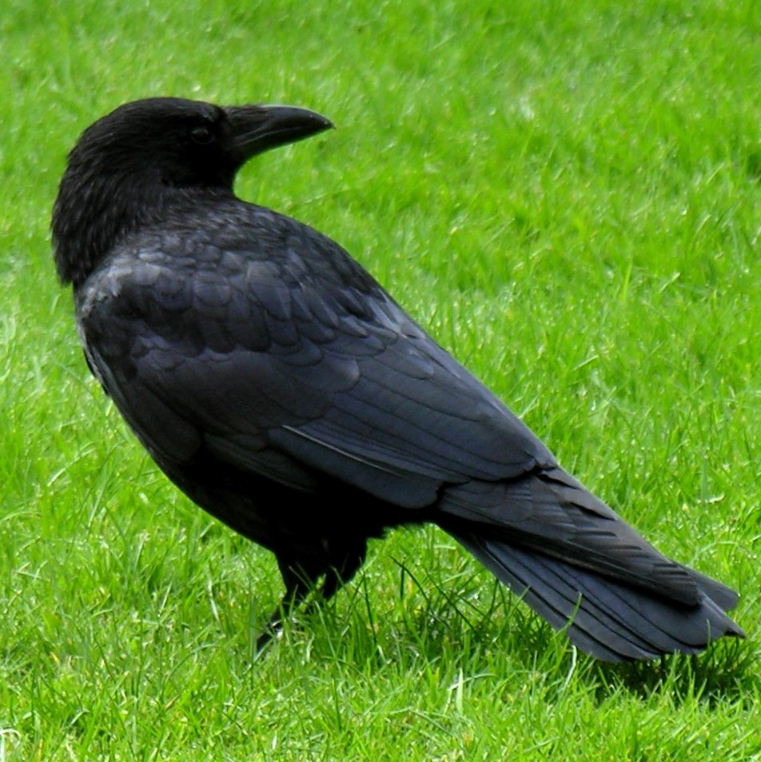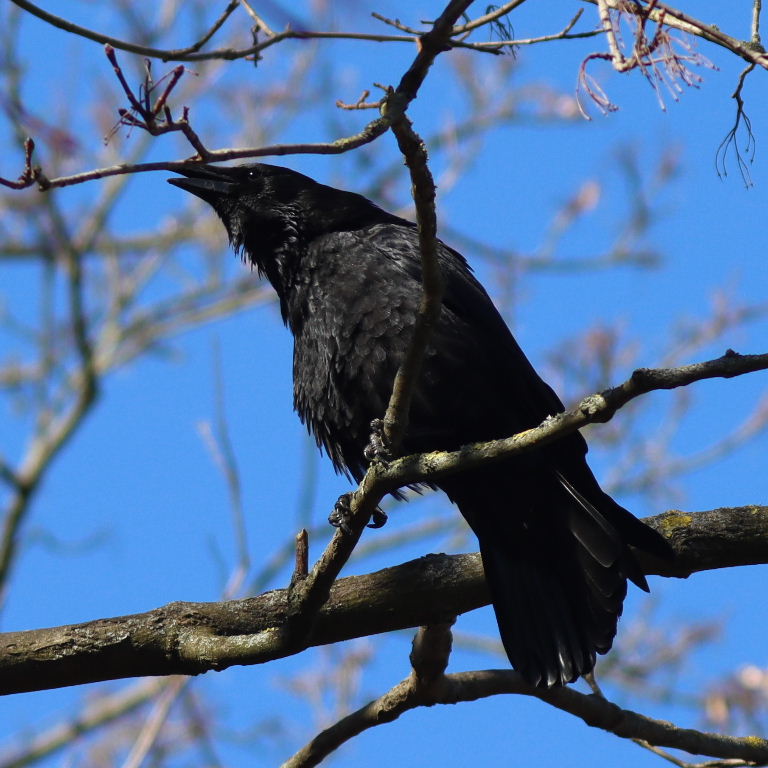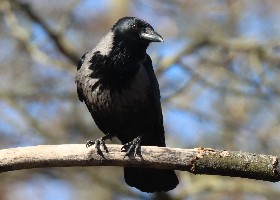Carrion Crow Corvus corone


The Carrion Crow is usually fully black, unlike the Hooded Crow, and has sleeker/tidier plumage than a Rook,
with a black beak on a fully feathered face.



Like all corvids, it is intelligent for a bird. Experiments have included seeing it drop stones into a narrow beaker
of shallow water to raise the water level to reach a floating morsel of food.



The all-black Carrion Crow is native to much of Western Europe, excluding northwest Scotland, Ireland and Italy, to small parts
of Central and Eastern Europe and to scattered regions of Asia including most of Japan. Where it is not present in Eurasia, its close relative,
the Hooded Crow usually is prevalent.



 It usually eats carrion, waste or small rodents/amphibians.
It usually eats carrion, waste or small rodents/amphibians.
 This beakful of feathers was pecked from a live wood pigeon.
This beakful of feathers was pecked from a live wood pigeon.
 To line a nest or to eat?
To line a nest or to eat?
 Crow doing an impression of a Rook with shaggy feathers and angular shape.
Crow doing an impression of a Rook with shaggy feathers and angular shape.





Unlike gregarious Rooks, which nest in communal Rookeries, Crows of breeding age tend to be
solitary or in pairs but may form flocks in winter. Juveniles under 3 years and elders over 7 also tend to form flocks,
and breeding crows will gang together to chase off intruders such as birds of prey (they will bravely peck at heads of birds of
prey until the raptor leaves the area).










